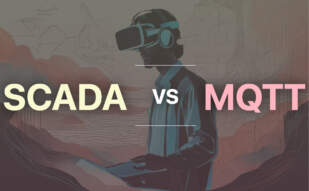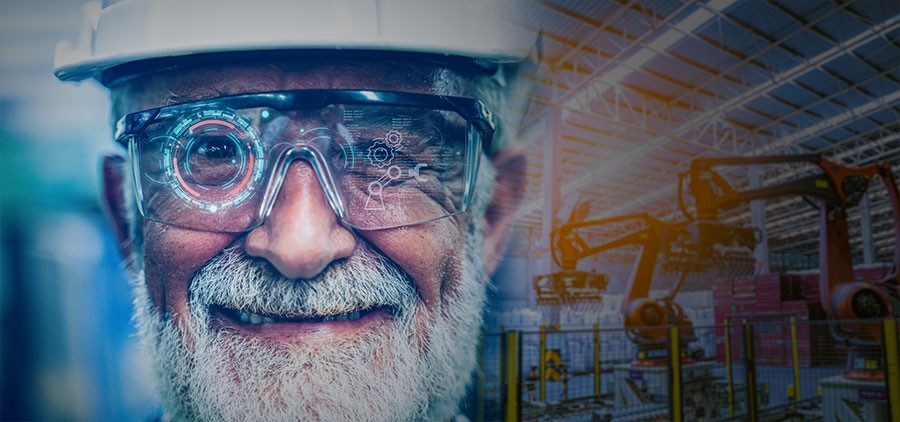Integrating Internet of Things (IoT) with Web Augmented Reality (AR) applications enhances data visualization and optimizes user interactions by linking multiple sources of data. IoT’s role in AR is pivotal as it revolutionizes industrial processes, enhances system efficiency, accelerates workflows and contributes to smarter, more interactive environments.

In this article, the reader will gain insights into the advancements in IoT and AR integration and understand its practical applications and implications across various sectors.
Enabling a Smarter, Interactive Environment with AR and IoT
In our continually evolving technological landscape, one of the most compelling transformations is the convergence of IoT and AR. This synergy paves the way for new possibilities, bringing forth smarter, more interactive environments. The integration of these two technologies manifests itself in varied forms and scales, notably contributing to improved user experiences and streamlined data management.
Exploring how AR-based IoT Creates an Intelligent and Interactive Technological Environment
The rise of augmented reality (AR) and the Internet of Things (IoT) has transformed the way we perceive and interact with our surroundings.
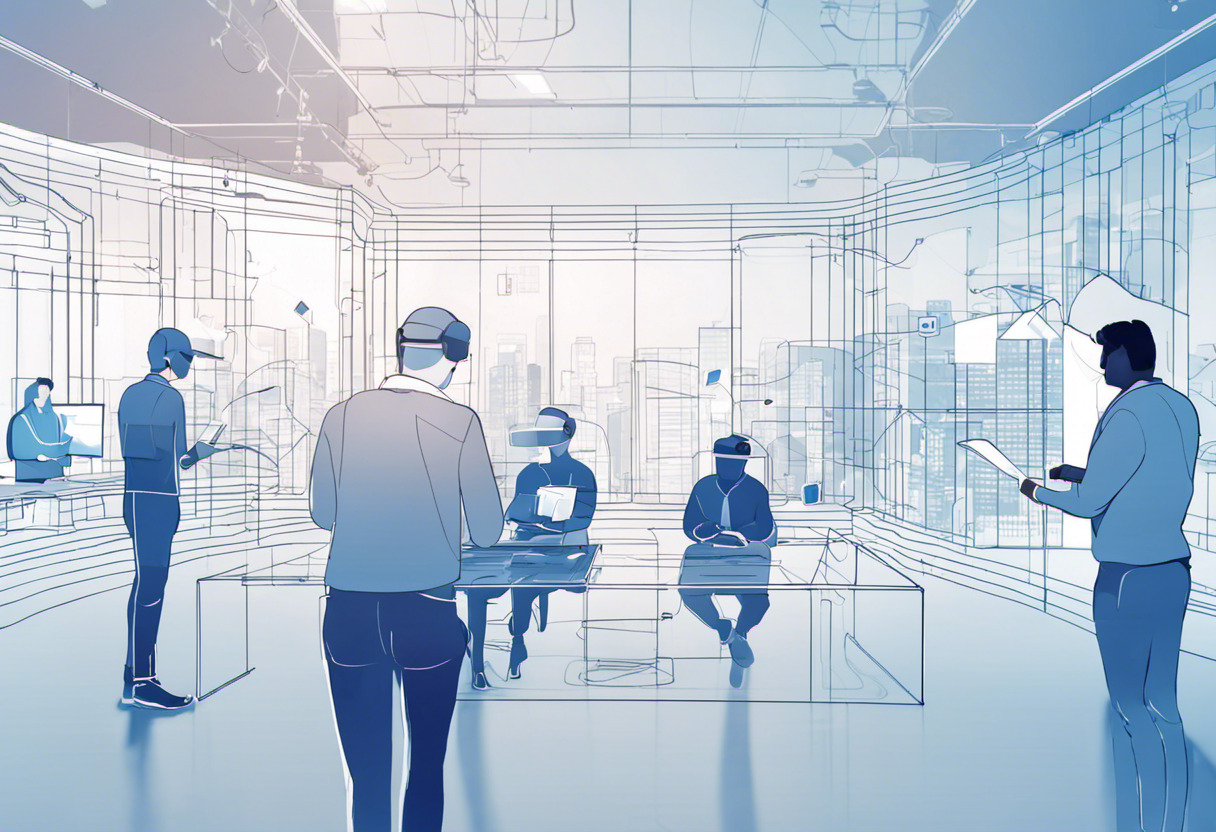
Key Components of AR-Based IoT Systems
The complementary functions of IoT and AR enable a smarter interaction with our environment. Here are the key components involved:
- Data Collection: The first step involves IoT devices collecting data from various physical entities. This can include information like temperature readings, location data and much more.
- Data Transmission: Afterward, these data points are transmitted to platforms that can process them. Rapid advancements in wireless connections for IoT sensors contribute to a seamless, uninterrupted transfer.
- Data Interpretation: Post transmission, the data can be processed and interpreted to extract meaningful insights.
- Data Visualisation: Finally, AR technology is used to visually present this data in a comprehensible and interactive format.

This cyclical process of data collection, transmission, interpretation, and visualisation makes for an intelligent, dynamic system that enhances user interaction and provides data-driven feedback in real time. This revolutionary integrated system opens doors for novel applications and Services. For an exhaustive exploration on the creation of AR responsive interfaces, this guide is an great resource for developers to understand how to create AR-enabled web interfaces.
The Impact on User Experiences and Data Management
The combination of AR and IoT introduces an advanced level of interaction in technological interfaces. Users can navigate these interfaces seamlessly, experiencing an intelligent, reflexive environment that adapts to their needs.
The real-world implications of this integration range from AR-enabled domestic appliances that learn user preferences to smart offices that alter settings based on employee behaviour. Take, for instance, an AR-enabled IoT thermostat system. This device collects data from the environment, processes it, then manages the temperature settings according to user preferences learnt over time. In addition, the AR feature allows the user to visualise heating and cooling patterns over a given timeline, providing both control and insight into their consumption patterns.
Moreover, data management experiences a significant transformation with the advent of AR-based IoT platforms. Given the interactive nature of AR, data presentation becomes more insightful and digestible, providing users with superior control in manipulating and interpreting complex datasets.
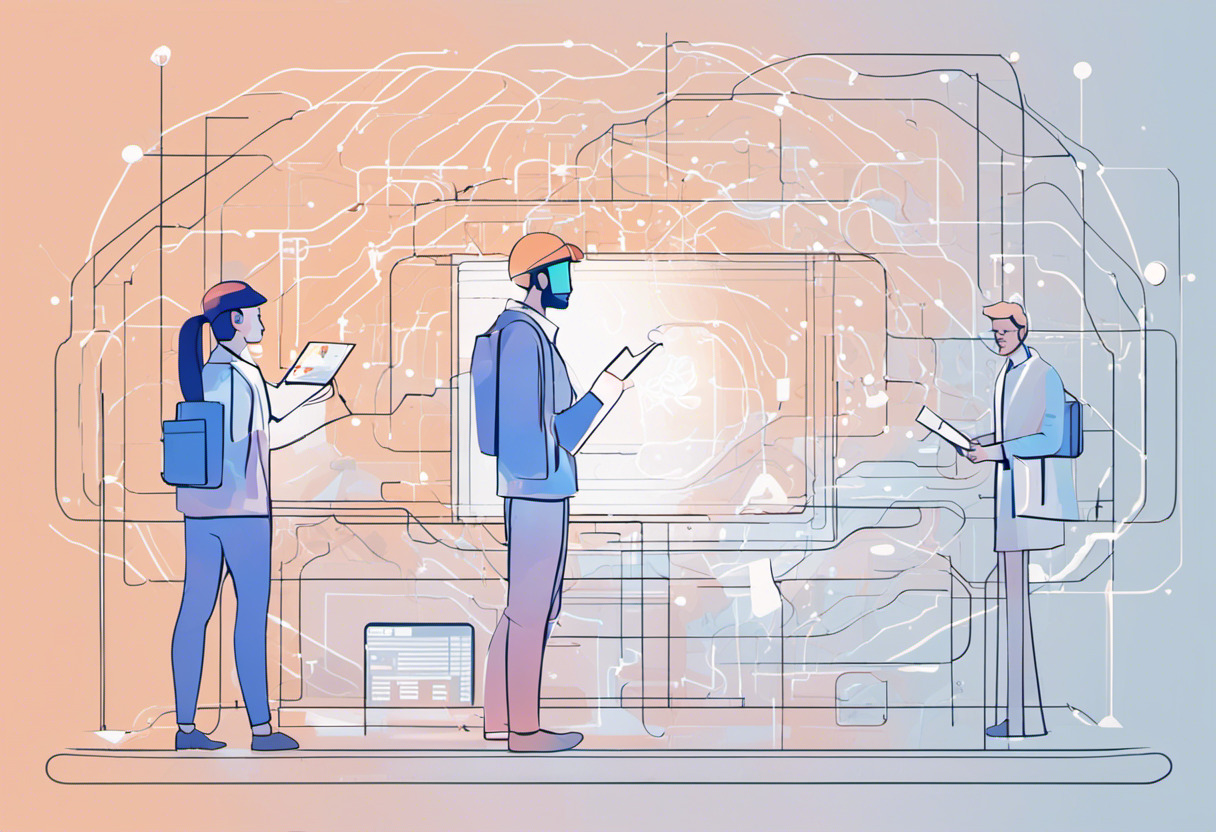
Revolutionising Industrial IoT with Augmented Reality Applications
The blending of Internet of Things and Augmented Reality is radically shaping how industries function. Using AR-enabled IoT, industrial enterprises capitalize on optimized processes, accelerated workflows, and improved efficiencies.
Analyzing the Integration of AR and IoT in Industrial Realm
The industrial landscape has been transformed by the seamless integration of Augmented Reality with IoT. It has enabled industries to witness improved system efficiency, fast troubleshooting, and effective remote monitoring, thereby heightening productivity and reducing costs.
Remote Monitoring with AR-IoT

One vital aspect of AR integration with IoT is its ability to facilitate remote monitoring. Real-time data from IoT devices can be visualised using AR tools, allowing engineers to monitor equipment performance and health condition from a remote location. This results in decreased downtime and increases operational effectiveness.
Fast Troubleshooting with AR-IoT
Moreover, the integrated system

Enhanced System Efficiency with AR-IoT
In addition, AR assists in visualising a complex set of IoT data in an intuitive and accessible form. Providing these data insights aids in making informed decisions which ultimately enhances the overall system efficiency.

Noteworthy Examples of AR-integrated IoT in Industries
Real-world examples underscore the benefits of implementing AR applications integrated with IoT in industrial operations.
- Siemens, for instance, uses AR tools to provide its operators with real-time data about their machinery. A network of IoT devices captures these data, which are filled into an AR application.
- General Electric applies IoT and AR to minimize unplanned downtime. By visually projecting 3D representations of entire machines, maintenance staff can identify potential failures before they occur, effectively increasing machine availability.
A comparative analysis of traditional methods versus AR-integrated IoT in terms of resource consumption, efficiency, and productivity further underscores the potential of the latter.
| Parameters | Traditional Methods | AR-integrated IoT |
|---|---|---|
| Resource consumption | High | Low |
| Efficiency | Medium | High |
| Productivity | Medium | High |
Guidelines for Creating IoT Web Applications
When undertaking the expedient journey of creating IoT web applications, which can seamlessly integrate with state-of-the-art augmented reality functionalities, there are numerous considerations to navigate through. These range from the integrative features of the application to potential challenges that might arise during the development process.
Key Considerations in IoT Web Application Development
In the sphere of IoT web application development, understanding the key requirements is the stepping stone to success. These essentially form the blueprint for a successful creation.
- Flexible Dashboarding: An efficient IoT web application needs to have a dynamic and user-friendly dashboard. This aids in data visualization and offers effortless management capabilities.
- Control options: Advanced control options are required to manage the various connected devices in the IoT network effectively.
- Security and Data Privacy: With the amplifying cyber threats, an effective security measure in place becomes non-negotiable. IoT applications often deal with sensitive data which necessitates a stringent data privacy policy.
- App Lifecycle Management: Efficient management of the lifecycle of IoT applications is crucial for their sustainable operation. From deployment to decommissioning, each stage must be meticulously managed.
Tackling Challenges in IoT Web Application Development
In grappling with the process of IoT Web application development, developers may encounter a few obstacles that can potentially hinder the development process.
- Seamless Connectivity: The interconnection of numerous devices, as well as the integration of wireless connections with IoT sensors, makes maintaining seamless connectivity a chief concern.
- Scalability: As the network grows, the scalability of the IoT web applications becomes a critical issue. Designing scalable applications from the beginning ensures longevity and ease of use.
A simple yet effective way to circumnavigate these challenges can be found by studying and implementing effective solutions provided in this tutorial: Understanding Web AR Markers and Tracking: Comprehensive Guide for IoT Web Application Development.
Real-life Example
Let’s examine a real-life instance that illustrates these points. An example of an IoT web application that successfully integrated with AR functionalities is Bosch’s Common Augmented Reality Platform (CAP). This platform made use of flexible dashboarding by providing a user-friendly tool for visualizing data from different sensors. It also maintained a high level of security by implementing an effective data privacy policy. Furthermore, the platform offered exceptional control options to manage the connected devices efficiently.
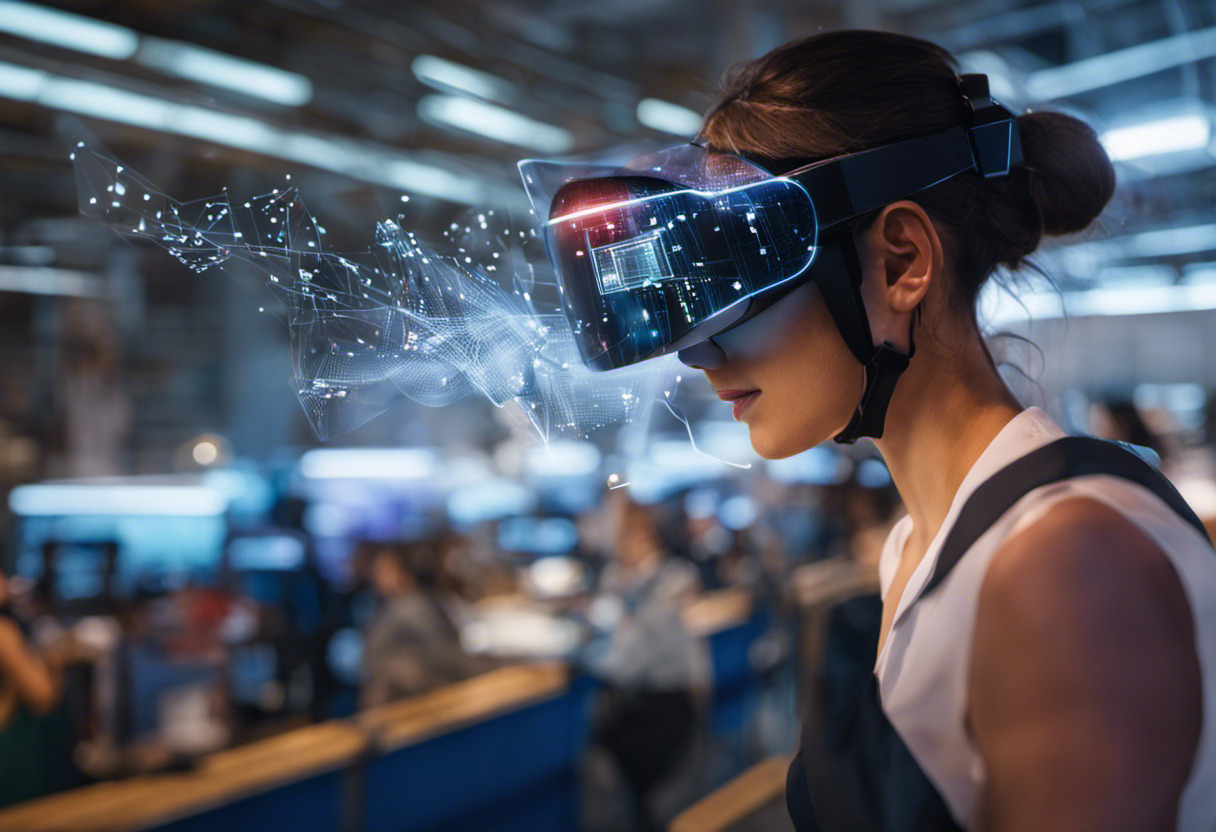
Adding to it, Bosch’s platform ensured seamless connectivity between AR functionalities and IoT devices, thereby overcoming the challenges. Also, provisions for effective app lifecycle management were made, aiding in smooth operation from deployment to decommissioning. Lastly, the application was designed to be scalable, considering the ever-growing network of interconnected devices.
An Expedition into Applications: IoT and Augmented Reality Across Diverse Spheres
The promising convergence of Internet of Things (IoT) and Augmented Reality (AR) is steadily transforming industries far beyond the realms of technology and innovation. This sect of the article takes the reader on an exploratory journey into real-world practical applications of IoT and AR integration in sectors such as real estate, product design, and education.
IoT and AR: A Dynamic Duo in the Real Estate Matrix
The real potential of technologies like IoT and AR unfolds when seen through the modern lens of the real estate industry. The combination has given rise to intelligent, futuristic homes and enhanced property visualization. IoT has been instrumental in creating “smart homes,” where devices are interconnected to optimize both energy and use. AR intersects this reality by providing lifelike, immersive visualizations of properties, minimizing the distance between buyer and seller, and creating a seamless transition.
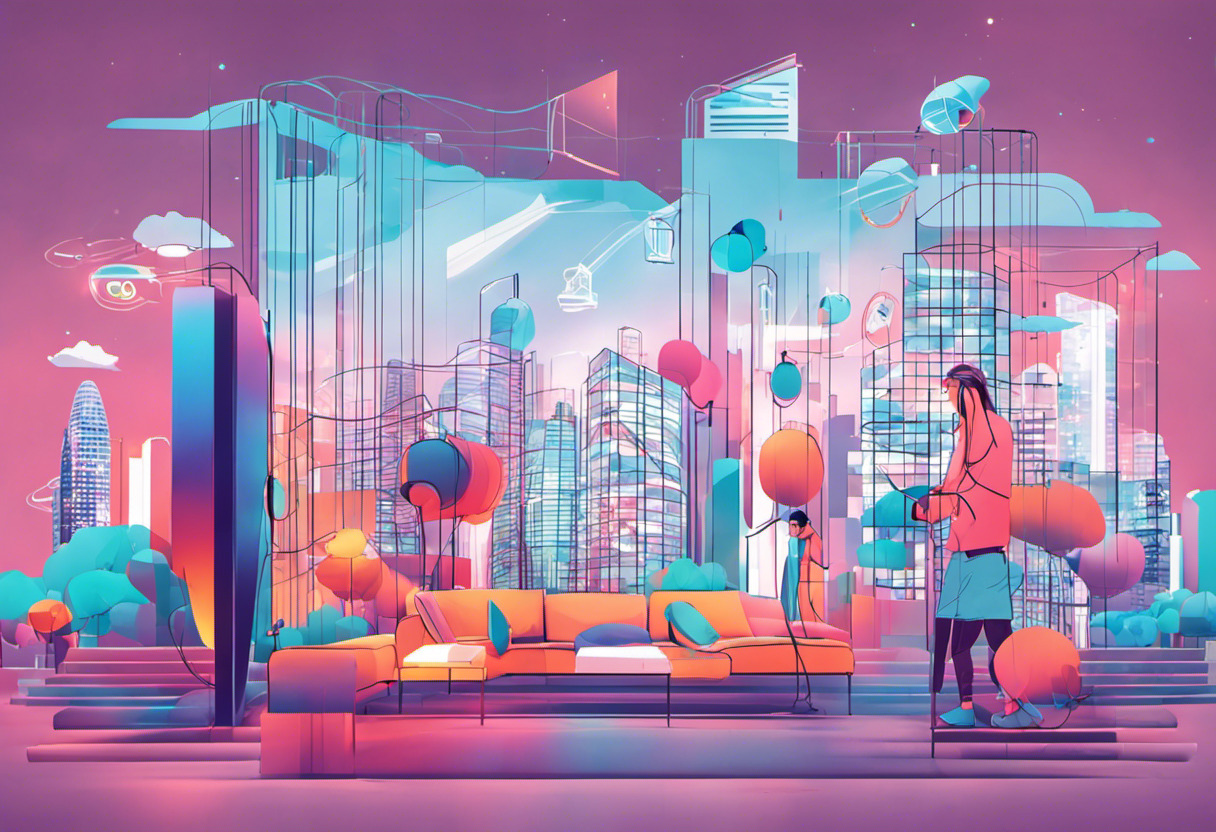
Product Design and Manufacturing: The IoT and AR Revolution
Another realm immensely benefiting from the amalgamation of IoT and AR is product design and manufacturing. IoT brings to table a robust system of real-time connectivity, instantaneous product data analysis, and swift problem detection. Concurrently, AR enables design and manufacturing personnel to visualize the IoT data and evaluate product designs more intuitively. For detailed elucidation on this synergy, consult this resourceful web page, depicting AR and IoT’s combined power in revolutionizing product design.
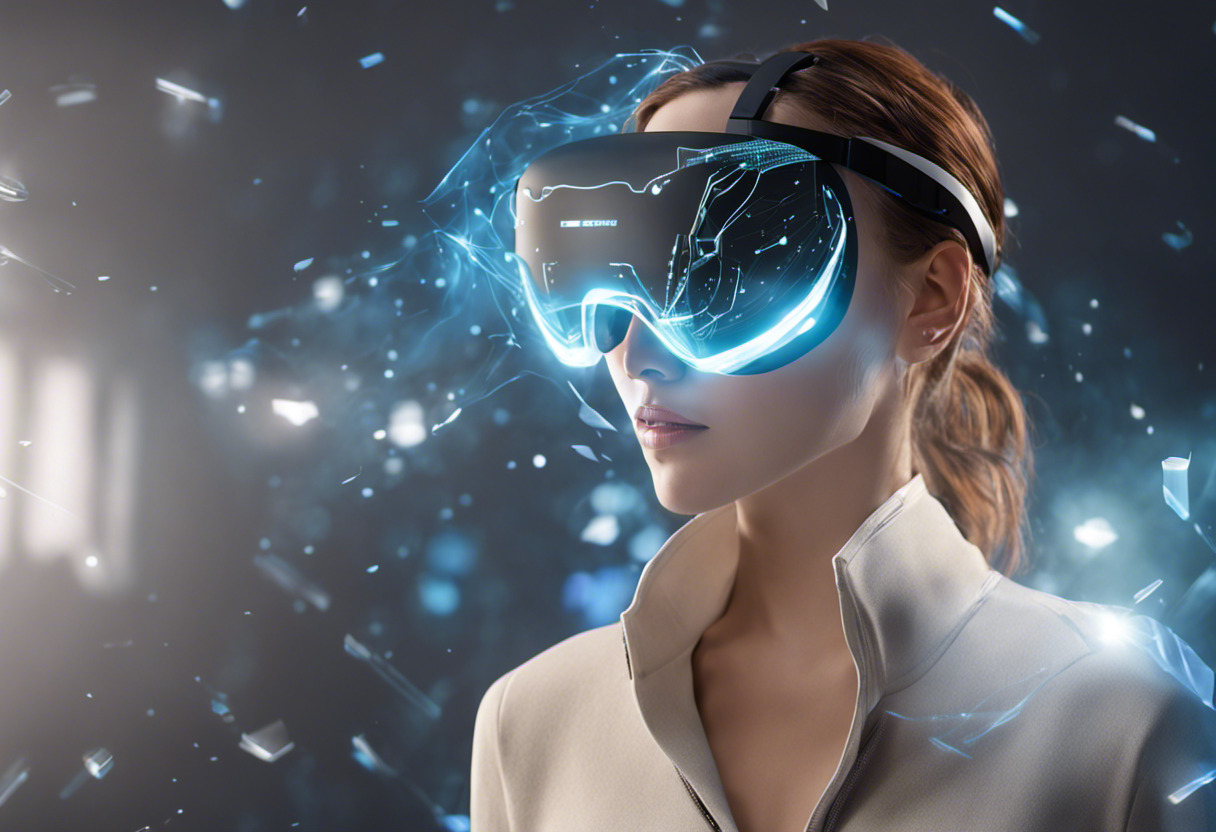
Pioneering Education with IoT and AR
The duo’s contributions to the education sector are commendable. IoT, with its networked connectivity, has deepened the technological underpinnings of modern classrooms. In tandem, AR has elevated the learning process by bringing complex theories and concepts to life. Students can now visualize, interact with, and understand abstract concepts, thus fostering an immersive and practical learning environment.

Spotlight: A Comparative Overview
Considering all these wide-ranging implications across different sectors, let’s take a closer look at how the integration of AR with IoT has uniquely influenced each of them:
| Sector | Role of IoT | Role of AR |
|---|---|---|
| Real Estate | Automates homes. Offers energy optimization. | Provides realistic property visualization. Bridges buyer-seller gap. |
| Product Design | Supports real-time connectivity. Enables swift problem detection. | Eases design visualization. Promotes intuitive product evaluation. |
| Education | Modernizes classrooms via networked connectivity. | Enhances understanding of complex concepts via interactive visualization. |
As we navigate the ever-evolving technological domain, the integration of IoT and AR presents more potential vistas for exploration, ready to be unlocked and leveraged across several different sectors. This technological revolution is here to stay, displaying infinite potential for growth and development.
Further Explorations
In addition to these sectors, the convergence of IoT and AR has the potential to revolutionize several other domains:
- Healthcare: With virtual demonstrations and real-time patient monitoring.
- Retail: Offering immersive shopping experiences with AR-based trials and IoT-enabled personalization.
- Agriculture: Via AR-assisted crop monitoring and IoT-enabled smart irrigation systems.
In every field, the integration of IoT and AR is paving the way for a transformative future, altering our approach to problem-solving and enhancing the world as we know it.
Empowering Augmented Reality via IoT Platforms
Amid all technological advancements, we witness today, the symbiosis of Augmented Reality (AR) and Internet of Things (IoT) stands out as a prominent innovative union. The extensive capabilities of IoT not only facilitate the effective operation of AR applications but revolutionize them.
Understanding the role of IoT Platforms in AR applications
Iot platforms play a critical role in accelerating the data flow, enhancing scalability, and increasing security in AR applications. They serve as a solid foundation, capable of initiating real-time data availability, indispensable for any high-performing, responsive augmented reality experience.
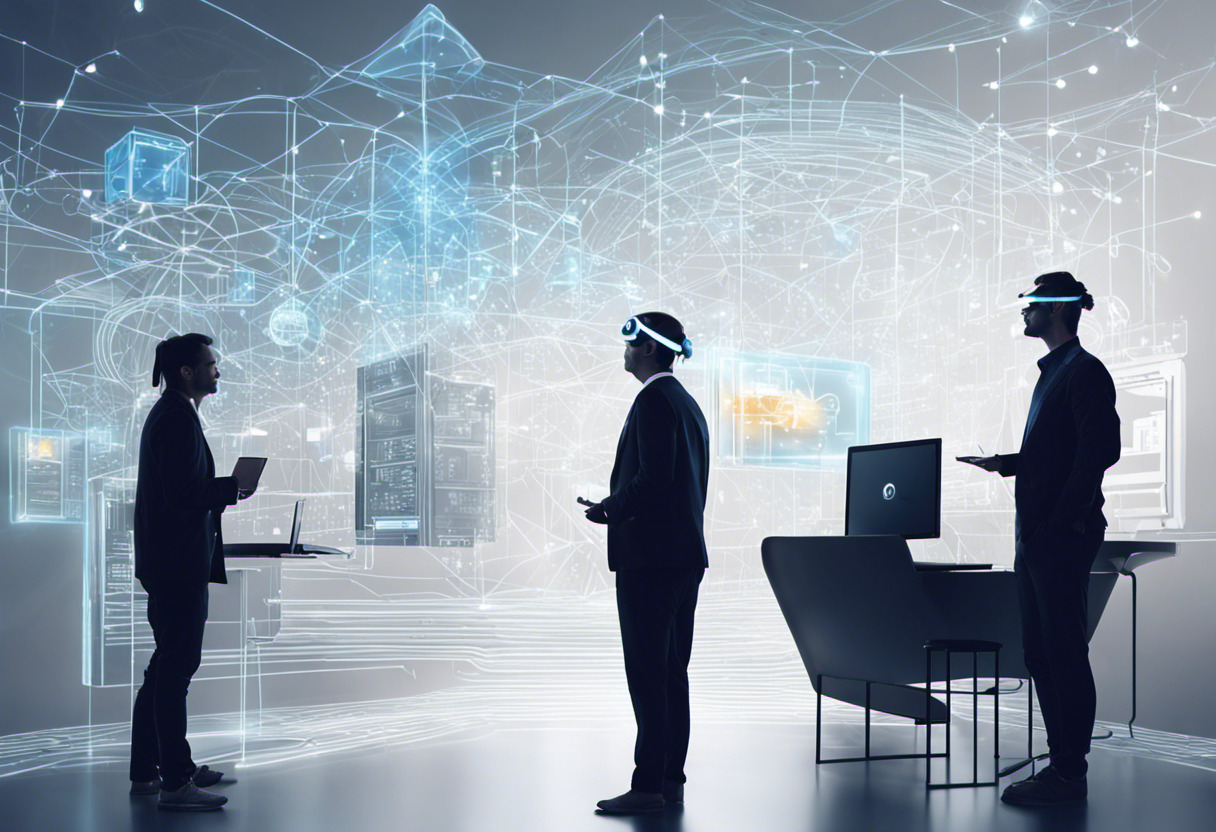
Benefits of IoT Enabled AR
Amid the myriad of advantages offered by integrating both technologies, three key benefits resonantly echo across industrial sectors.
- Real-time Data Availability: IoT provides a continuous inflow of data, which when animated through AR, creates an intuitive interface for users. Real-time data enables quick decisions, reduced lag, and efficient system integral to various industries.
- Scalability: IoT platforms offer extensive scalability to AR apps. With more IoT devices, the correspondence in AR visuals can lead to a more intricate and information-rich experience.
- Security: Since IoT platforms show a high level of security control, it gives AR applications a safeguard against potential vulnerabilities.
Implications of IoT in Enhancing AR
IoT platforms, when correctly integrated, work as catalysts in amplifying the efficacy of AR applications. Let’s delve into the use-cases for a better understanding.
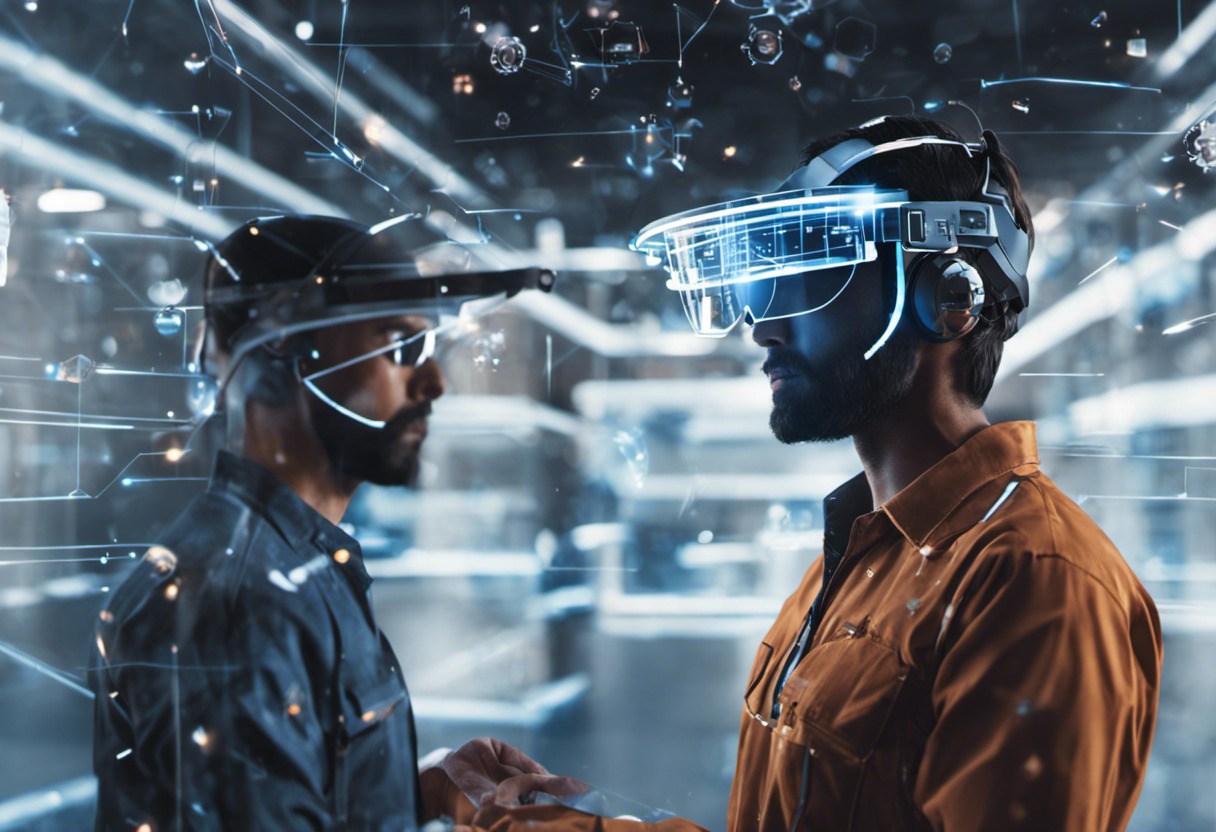
- Manufacturing & Industry: Consider an AR application for a car assembly line. Workers equipped with AR glasses can receive real-time data from IoT-mounted on the car parts. This technology can guide step-by-step assembly procedures, reducing error rates and saving valuable time.
- Medical Training: Doctors in training can use AR applications that can provide real-time data from IoT devices like patient monitoring systems, particularly beneficial during surgical simulations and other medical procedures training.
These instances embody the wealth of possibilities when IoT platforms lend their strengths to AR development. They underpin the future trajectory of AR applications armed with IoT, thus unlocking new avenues of innovation.
Conclusion- The convergence of IoT and AR promises a transformative future
The convergence of AR and IoT paves the way for an epoch of interactive and intelligent technological environments. Freeing us from the restrictions of physical devices and screen-based experiences, it marks the beginning of a novel era of interactivity and immersive user experiences.
Tiffany Brise
Content writer @ Aircada, patiently awaiting a consumer AR headset that doesn’t suck.




